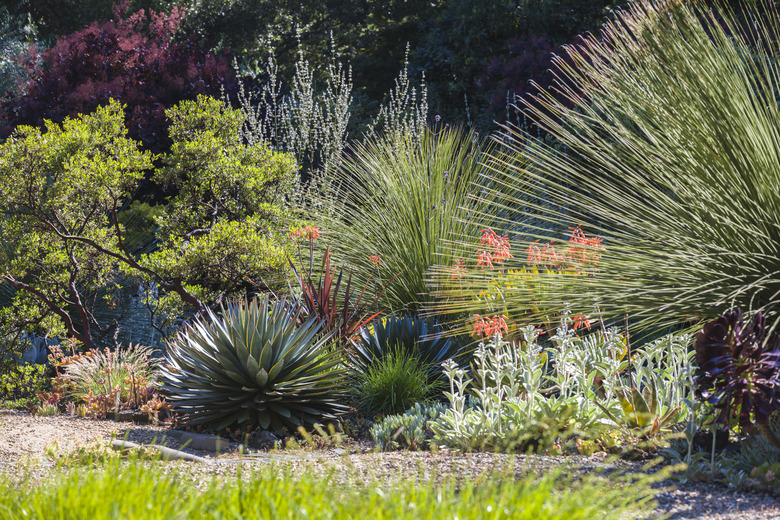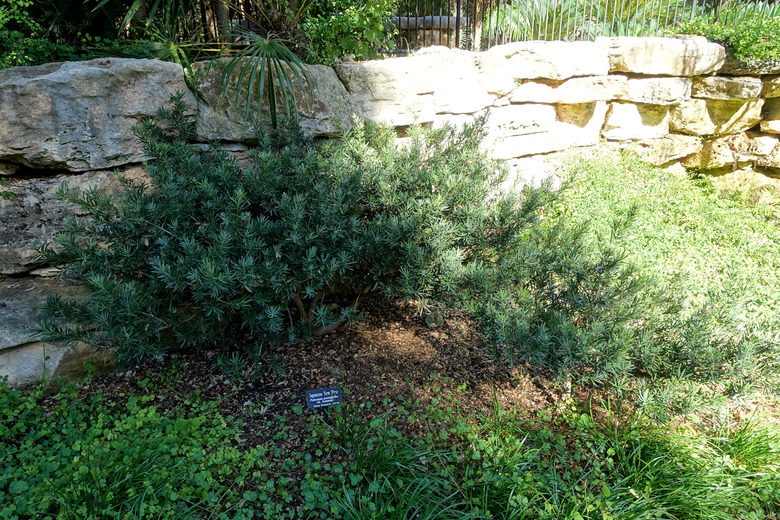Xeriscape Design Ideas For Florida
Drive down any street in Florida on a summer's morning or evening, and you'll see the lawn and garden sprinklers busy at work. Does all that water need to be pumped into the ground? Is it being wasted; is it used frivolously without a thought to the water shortage; and is it even necessary?
What Is Xeriscaping?
Introducing xeriscaping, a perfectly logical way to conserve water while at the same time using less energy, cutting maintenance bills and helping to preserve Florida's precious water reserves, according to the University of Central Florida.
Xeriscape, which means water conservation through creative landscaping, originated in the desert Southwest, where cacti and succulents prevail. But Florida's tropical landscape is a far cry from the desert, so xeriscaping takes on a new meaning when you're trying to create that lush, plush, posh ideal.
Xeriscaping plans for Florida landscapes must account for the sandy soil, harsh sunlight and drought conditions. The plants must be appropriate for the location.
An initial site analysis is tantamount to creating a blueprint for your xeriscape. Acknowledge what you have, whether it's a slope or a swale. Does the area drain well, and which direction does the target face? Also consider the structures already in place and any existing plants.
Move on from there to develop a planting plan that is not only cost-effective but efficient and long-lasting.
Developing a Planting Plan for Your Xeriscape
Draw a map that includes all the planting areas. Do your research to determine which plants you need to acquire, considering the direction of the site, the grassy areas, any pathways and edging. Also consider which areas get shade and which are open to harsh sun.
Keep the design simple and use geometric shapes to provide structure to your design, writes The University of Florida Extension.
When researching plants, become familiar with the colors of their blooms, when they bloom, their maintenance needs, their mature height and the soil conditions that encourage healthy plant development.
Warning
Most plants are not full grown when first purchased. Recognize that they will grow and consider their mature height when adding them to your design.
Understand Florida’s Soil
Dig down a few inches into your soil, and you'll probably hit water or at least damp sand. Florida's water table is high, which is why basements are rarely constructed in Florida homes.
You'll probably need to supplement the landscape's soil. Custom design the soil to be conducive to the type of plants you want in specific areas. Mulch, which is vital in maintaining the temperature and moisture level of the soil, is an attractive alternative to grass.
If you're planting vegetables, the regular turnover of the soil created by these types of planting is a supplement in itself. If you've used organic matter in your previous plantings, it should serve as ample enrichment.
If planting native plants, you may not need to amend the soil content. Work with the soil, not against it, and don't try to make it what it's not.
Choosing Your Plants
Work with a landscape designer or a gardener from your local garden center. They'll know which plants are appropriate for your USDA hardiness zone's xeriscape.
Know Your USDA Zone and Choose Plants Resistant to Wind, Disease and Insects
Florida's long peninsula is home to numerous hardiness zones, from the cold-hardy north of the state to the tropical south of the Florida Keys. Choose Florida-friendly plants that are wind resistant.
Also pay attention to their ability to resist disease and insects. Select plants from the UF/IFAS Florida-Friendly Plant List or consult your county extension office.
Try Out Different Shapes and Colors
The shape of the plant is also a major consideration. Large foliage with interesting shapes and colors are perfect for the rear of the landscape and require much less maintenance than flowers.
Podocarpus (Podocarpus macrophyllus) can be pruned to a shape that's conducive to your landscape design, and its purple berries will provide food for birds and wildlife. It creates a good background for any colorful plantings placed in front of it.
Group Your Plants by Their Needs
Tier your design, giving each plant its day in the sun, and put all high-maintenance plants together—separated from those that need little maintenance.
Go for quality plants, not bargain basement deals, and stay away from invasives.
Tip
Schedule irrigation to correspond with the weather. A rainy summer and dry winter mean adjustments are needed.
Use Grass to an Advantage
Grass is vital to your xeriscape design. It breaks up the design, giving the eye a rest. Lay the grass where mowing will be easy and the watering schedule corresponds with the plants behind it. Since it requires more maintenance than the plants, minimize grass as much as possible.
Stand back and admire your xeriscape design. You've created an environmentally friendly landscape that you will spend more time looking at than you will maintaining it.

